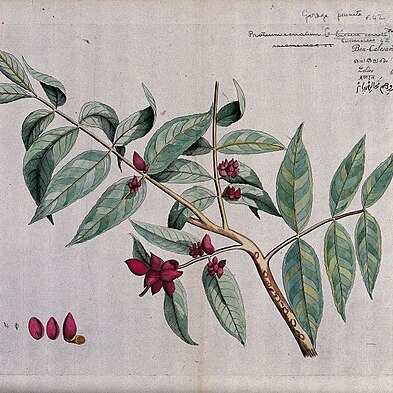A medium sized tree. It can lose its leaves during the year. It grows to 20-30 m tall. The trunk can be 30-40 cm across. The crown of the tree in large and round. The leaves are feather like and compound. There are 5-9 leaflets that are pointy at the tip. The bases are unequal. There can be teeth along the edge. The leaves turn red before falling off. The flowers are small and green. They are in short branching clusters. There are 4-5 petals. The fruit are on thick stalks. The fruit are almost round and 2-3 cm across. They are red or bright pink when ripe. The fruit are sour-sweet and edible.

